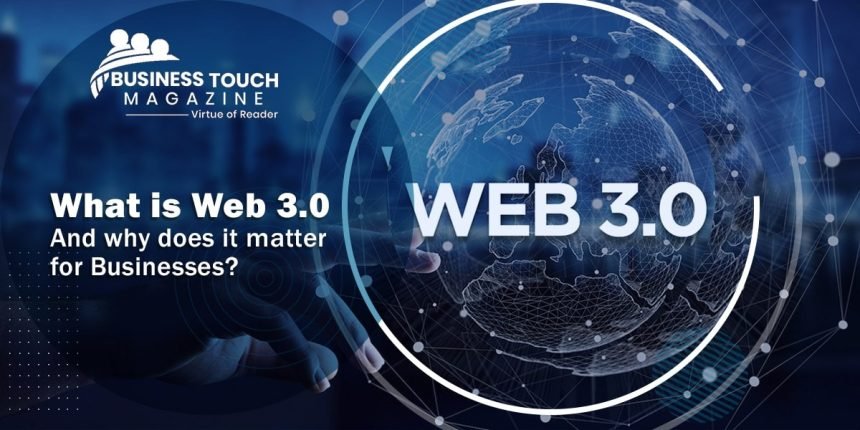A world without the Internet is hard to fathom. It’s become a need in today’s society. It’s hard to imagine life before the Internet, particularly in light of a global pandemic that has undoubtedly increased the urgency with which most of us turn to the Internet for our professional, interpersonal, academic, economical, and recreational requirements. The Internet has undergone profound changes over the last three decades as our dependence on it has grown. In addition, Web 3.0 is already readily apparent as the next logical step in its evolution.
The relevance of these augmented updates may be better understood if we go through some historical timelines. When the World Wide Web first went live, it was a read-only experience. It was a huge step forward since it made published material available to people all over the world, even if only a select few could access it. Such websites would be readable and navigable, but wouldn’t allow for much interaction from the user’s end. Moreover, search engines were not as sophisticated in this incarnation (at least this iteration saved people from worrying about SEO and page rankings).
The advent of Web 2.0 made it possible for users to actively participate in the creation of digital content. It would allow users to establish unique online identities for themselves and their businesses, which would have far-reaching implications for business in general and e-commerce in particular by allowing startups to advertise their wares to a worldwide audience of potential customers at cheap cost. With the advent of cloud computing, data and infrastructure management underwent a sea change. By delivering data and linking it via data centres all over the world, cloud providers have reduced the need for extensive physical infrastructure. Companies may now affordably expand their operations because to the availability of outsourced data storage, processing power, and management systems.
What’s more, it meant that anybody with access to the Internet could submit information to a worldwide audience, spawning the globally pervasive habit of blogging and providing fuel for user-published sites like Wikipedia, which went on to achieve phenomenal success. It is also impossible to discount the role Web 2.0 played in facilitating the development of social media platforms like MySpace and, later, the even more explosive Facebook, Twitter, and YouTube as the user-generated content revolution reached a new level of intensity.
The Age of Web 3.0
In other words, the third generation of the World Wide Web, also known as the decentralised web, is made possible by distributed ledger technology. As opposed to storing information in centralised databases, its primary focus is on establishing decentralised links between data using intelligent machines that can analyse data just as well as humans. This next version of the Internet will be more sophisticated and powerful in terms of information processing, allowing people and machines to connect with data more effectively. This is due in large part to the role artificial intelligence (AI) will play.
Ultimately, this will help computers to better understand the semantics of the data, allowing for far more nuanced interactions for end users.
What Should Businesses Expect from Web 3.0?
The inadequacies of Web1.0 and Web2.0 informed the creation of Web3.0. User trust, privacy, and transparency are just some of the issues that its decentralised design hopes to address. In today’s fast-paced corporate world, this fluidity may signify a great deal because to the natural communication it facilitates between people and technology. These are several examples:
• Less Middleman:
By using blockchain networks of decentralised nodes that can validate cryptographically protected transactions, it is unnecessary to depend on a single centralised institution as the source of truth. Smart contracts, on the other hand, may execute themselves and do away with the necessity for a middleman.
• Data Ownership & Sharing:
Many people expect a shift from Web 2.0, where large centralised entities provide services and access to their platforms in exchange for users’ personal data, to Web 3.0, where users can participate in the network through decentralised applications without their data being exploited for financial gain. Data is no longer privately held; rather, it is publicly accessible via a variety of applications and services that offer it in different ways. Most importantly, individuals will once again have complete authority over their own data.
• Wider Digital Transformation:
Many believe that Web 3.0 will be a “spatial” web, in which digital information will exist in space and become more disassociated from the real world, and that 3D graphics will play a crucial role in this transition. With the help of cutting-edge technologies like augmented and virtual reality, 5G networking, the IoT, artificial intelligence (AI), and blockchain, the boundaries between the virtual and real worlds may be erased, paving the way for a truly seamless 3D Web. Successful 3D designs are already being used in a variety of online and mobile applications, including video games, museum guides, and virtual tours of homes.
• Connected Ecosystem:
With Web 3.0, peer-to-peer communication and flexible governance will enable enterprises future-proof themselves and make a smoother push into the next digital age by facilitating the sharing of relationships between participants. Through these connections, a vibrant community has emerged, one whose members may pool their talents to address issues that have languished unsolved for far too long.
Live Examples of Web 3.0
Web 3.0 tools like Wolfram Alpha and Apple’s Siri are able to distil vast amounts of data into usable knowledge and relevant outcomes.
Wolfram
Wolfram’s search results stand out from those of competing engines because of the breadth of information they provide. To put it another way, the analytical and graphical representations it offers make the data it contains more trustworthy. It’s as if the outcomes are specifically designed for you.
Siri
In contrast, Siri uses artificial intelligence and voice recognition algorithms to provide information and carry out actions. Searches conducted using classic technologies (Web 1.0 and 2.0) do “word for word” matching of textual content posted to the Internet.
That is to say, it often adds information bias depending on what is most numerous, leading to the concealment of that which is now most important to the user.
Closing thoughts
The new Internet will provide a better tailored experience for each user, enhanced search engine functionality, and decentralised advantages that will help create a more democratic and cooperative online community. When users have complete control over their information, a multitude of new developments will become possible.
Web 3.0 will make the Internet an even more integral part of people’s lives, which is hard to fathom given the influence smart gadgets have already had on our routines. Almost all of today’s typical offline devices, such as household appliances and, transit will become part of the IoT economy. It will communicate with its self-driving servers and dApps, expanding into uncharted digital territories like blockchain and digital assets to fuel an avalanche of 21st-century technological “miracles.”




